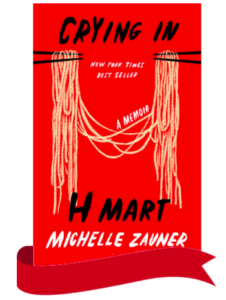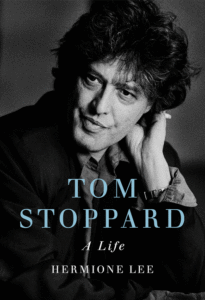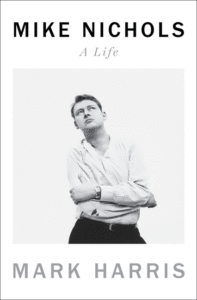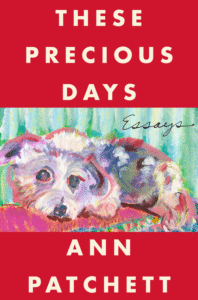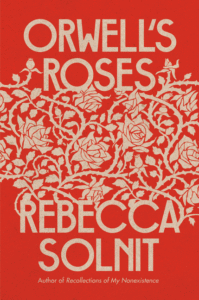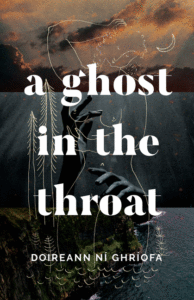
The Best Reviewed Nonfiction of 2021
Featuring George Saunders, Joan Didion, Michelle Zauner, Tom Stoppard, Tove Ditlevsen, and more
Well, friends, another grim and grueling plague year is drawing to a close, and that can mean only one thing: it’s time to put on our Book Marks stats hats and tabulate the best reviewed books of the past twelve months.
Yes, using reviews drawn from more than 150 publications, over the next two weeks we’ll be revealing the most critically-acclaimed books of 2021, in the categories of (deep breath): Memoir and Biography; Sci-Fi, Fantasy, and Horror; Short Story Collections; Essay Collections; Poetry; Mystery and Crime; Graphic Literature; Literature in Translation; General Fiction; and General Nonfiction.
Today’s installment: Nonfiction.
Brought to you by Book Marks, Lit Hub’s “Rotten Tomatoes for books.”
*
1. Crying in H Mart by Michelle Zauner
(Knopf)
24 Rave • 6 Positive
“… powerfully maps a complicated mother-daughter relationship cut much too short … Zauner’s food descriptions transport us to the table alongside her … a rare acknowledgement of the ravages of cancer in a culture obsessed with seeing it as an enemy that can be battled with hope and strength …Zauner carries the same clear-eyed frankness to writing about her mother’s death five months after her diagnosis … It is rare to read about a slow death in such detail, an odd gift in that it forces us to sit with mortality rather than turn away from it.”
–Kristen Martin (NPR)
2. The Copenhagen Trilogy by Tove Ditlevsen, trans. by Tiina Nullally and Michael Favala Goldman
(FSG)
23 Rave • 4 Positive
Read an excerpt from The Copenhagen Trilogy here
“… beautiful and fearless … Ditlevsen’s memoirs…form a particular kind of masterpiece, one that helps fill a particular kind of void. The trilogy arrives like something found deep in an ancestor’s bureau drawer, a secret stashed away amid the socks and sachets and photos of dead lovers. The surprise isn’t just its ink-damp immediacy and vitality—the chapters have the quality of just-written diary entries, fluidly translated by Tiina Nunnally and Michael Favala Goldman—but that it exists at all. It’s a bit like discovering that Lila and Lenú, the fictional heroines of Elena Ferrante’s Neapolitan quartet, were real … A half-century later, all of it—her extraordinary clarity and imperfect femininity, her unstinting account of the struggle to reconcile art and life—still lands. The construct of memoir (and its stylish young cousin, autofiction) involves the organizing filter of retrospection, lending the impression that life is a continuous narrative reel of action and consequence, of meanings to be universalized … Ditlevsen’s voice, diffident and funny, dead-on about her own mistakes, is a welcome addition to that canon of women who showed us their secret faces so that we might wear our own.”
–Megan O’Grady (The New York Times Book Review)
3. Tom Stoppard: A Life by Hermione Lee
(Knopf)
13 Rave • 19 Positive • 3 Mixed
Read an excerpt from Tom Stoppard: A Life here
“Lee…builds an ever richer, circular understanding of his abiding themes and concerns, of his personal and artistic life, and of his many other passionate engagements … Lee’s biography is unusual in that it was commissioned, and published while its subject is still alive. Lee is a highly acclaimed biographer whose rigor and integrity make her decision to write under such conditions surprising … Lee is frank and thoughtful about the challenges of writing about a living subject. She is aware, as the reader will be, that her interview subjects do not want to speak ill of a friend and colleague who is still among them. In addition to the almost unrelievedly positive portrayal of Stoppard, the seven-hundred-fifty-plus pages of this volume might have been somewhat condensed, were its subject no longer living, thereby rendering the biography easier to wield and to read. In spite of these quibbles, this is an extraordinary record of a vital and evolving artistic life, replete with textured illuminations of the plays and their performances, and shaped by the arc of Stoppard’s exhilarating engagement with the world around him, and of his eventual awakening to his own past.”
–Claire Messud (Harper’s)
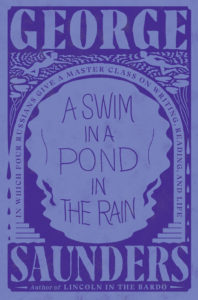
4. A Swim in a Pond in the Rain: In Which Four Russians Give a Master Class on Writing, Reading, and Life by George Saunders
(Random House)
20 Rave • 9 Positive • 3 Mixed • 2 Pan
Listen to an interview with George Saunders here
“This book is a delight, and it’s about delight too. How necessary, at our particular moment … I love the warmth with which he writes about this teaching … This kind of reading (one of the best kinds, I’m convinced) tracks the author’s intentions—and missed intentions, and intuitions, and instinctive recoil from what’s banal or obvious—so closely and intimately, at every step, through every sentence … All this makes Saunders’s book very different from just another ‘how to’ creative writing manual, or just another critical essay. In enjoyably throwaway fashion, he assembles along his way a few rules for writing … reading…with this rich, close attention will mulch down into any would-be writer’s experience, and repay them by fertilising their own work eventually … One of the pleasures of this book is feeling his own thinking move backwards and forwards, between the writer dissecting practice and the reader entering in through the spell of the words, to dwell inside the story.”
–Tessa Hadley (The Guardian)

5. Real Estate by Deborah Levy
(Bloomsbury)
18 Rave • 9 Positive
Read an excerpt from Real Estate here
“[A] wonderful new book … Levy, whose prose is at once declarative and concrete and touched with an almost oracular pithiness, has a gift for imbuing ordinary observations with the magic of metaphor … The new volume, which follows the death of one version of the self, describes the uncertain birth of another … She herself is not always a purely likable, or reliable, narrator of her own experience, and her book is the richer for it.”
–Alexandra Schwartz (The New Yorker)
6. Mike Nichols: A Life by Mark Harris
(Penguin)
18 Rave • 8 Positive • 2 Mixed
“Mark Harris’s portrait of director Mike Nichols is a pleasure to read and a model biography: appreciative yet critical, unfailingly intelligent and elegantly written. Granted, Harris has a hyper-articulate, self-analytical subject who left a trail of press coverage behind him, but Nichols used his dazzling conversational gifts to obfuscate and beguile as much as to confide … Harris, a savvy journalist and the author of two excellent cultural histories, makes judicious use of abundant sources in Mike Nichols: A Life to craft a shrewd, in-depth reckoning of the elusive man behind the polished facade … Harris gently covers those declining years with respect for the achievements that preceded them. His marvelous book makes palpable in artful detail the extraordinary scope and brilliance of those achievements.”
–Wendy Smith (The Washington Post)
7. These Precious Days by Ann Patchett
(Harper)
21 Rave • 3 Positive • 1 Mixed
Read Ann Patchett on creating the work space you need, here
“… excellent … Patchett has a talent for friendship and celebrates many of those friends here. She writes with pure love for her mother, and with humor and some good-natured exasperation at Karl, who is such a great character he warrants a book of his own. Patchett’s account of his feigned offer to buy a woman’s newly adopted baby when she expresses unwarranted doubts is priceless … The days that Patchett refers to are precious indeed, but her writing is anything but. She describes deftly, with a line or a look, and I considered the absence of paragraphs freighted with adjectives to be a mercy. I don’t care about the hue of the sky or the shade of the couch. That’s not writing; it’s decorating. Or hiding. Patchett’s heart, smarts and 40 years of craft create an economy that delivers her perfectly understated stories emotionally whole. Her writing style is most gloriously her own.”
–Alex Witchel (The New York Times Book Review)
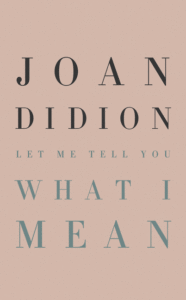
8. Let Me Tell You What I Mean by Joan Didion
(Knopf)
14 Rave • 12 Positive • 6 Mixed
Read an excerpt from Let Me Tell You What I Mean here
“In five decades’ worth of essays, reportage and criticism, Didion has documented the charade implicit in how things are, in a first-person, observational style that is not sacrosanct but common-sensical. Seeing as a way of extrapolating hypocrisy, disingenuousness and doubt, she’ll notice the hydrangeas are plastic and mention it once, in passing, sorting the scene. Her gaze, like a sentry on the page, permanently trained on what is being disguised … The essays in Let Me Tell You What I Mean are at once funny and touching, roving and no-nonsense. They are about humiliation and about notions of rightness … Didion’s pen is like a periscope onto the creative mind—and, as this collection demonstrates, it always has been. These essays offer a direct line to what’s in the offing.”
–Durga Chew-Bose (The New York Times Book Review)
9. Orwell’s Roses by Rebecca Solnit
(Viking)
12 Rave • 13 Positive • 1 Mixed
Read an excerpt from Orwell’s Roses here
“… on its simplest level, a tribute by one fine essayist of the political left to another of an earlier generation. But as with any of Solnit’s books, such a description would be reductive: the great pleasure of reading her is spending time with her mind, its digressions and juxtapositions, its unexpected connections. Only a few contemporary writers have the ability to start almost anywhere and lead the reader on paths that, while apparently meandering, compel unfailingly and feel, by the end, cosmically connected … Somehow, Solnit’s references to Ross Gay, Michael Pollan, Ursula K. Le Guin, and Peter Coyote (to name but a few) feel perfectly at home in the narrative; just as later chapters about an eighteenth-century portrait by Sir Joshua Reynolds and a visit to the heart of the Colombian rose-growing industry seem inevitable and indispensable … The book provides a captivating account of Orwell as gardener, lover, parent, and endlessly curious thinker … And, movingly, she takes the time to find the traces of Orwell the gardener and lover of beauty in his political novels, and in his insistence on the value and pleasure of things.”
–Claire Messud (Harper’s)
10. A Ghost in the Throat by Doireann Ní Ghríofa
(Biblioasis)
17 Rave • 4 Positive
Read an excerpt from A Ghost in the Throat here
“… ardent, shape-shifting … The book is all undergrowth, exuberant, tangled passage. It recalls Nathalie Léger’s brilliant and original Suite for Barbara Loden: a biography of the actress and director that becomes a tally of the obstacles in writing such a book, and an admission of the near-impossibility of biography itself … The story that uncoils is stranger, more difficult to tell, than those valiant accounts of rescuing a ‘forgotten’ woman writer from history’s erasures or of the challenges faced by the woman artist … What is this ecstasy of self-abnegation, what are its costs? She documents this tendency without shame or fear but with curiosity, even amusement. She will retrain her hungers. ‘I could donate my days to finding hers,’ she tells herself, embarking on Ni Chonaill’s story. ‘I could do that, and I will.’ Or so she says. The real woman Ni Ghriofa summons forth is herself.”
–Parul Sehgal (The New York Times)
*
Our System:
RAVE = 5 points • POSITIVE = 3 points • MIXED = 1 point • PAN = -5 points
Book Marks
Visit Book Marks, Lit Hub's home for book reviews, at https://bookmarks.reviews/ or on social media at @bookmarksreads.










